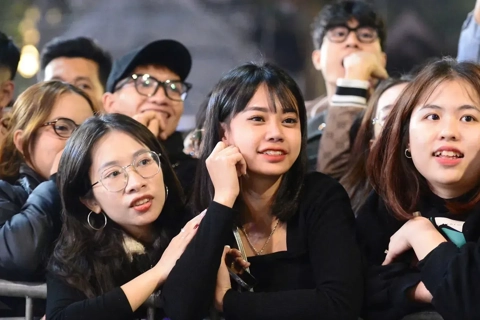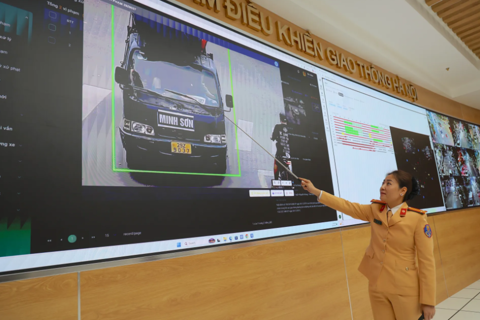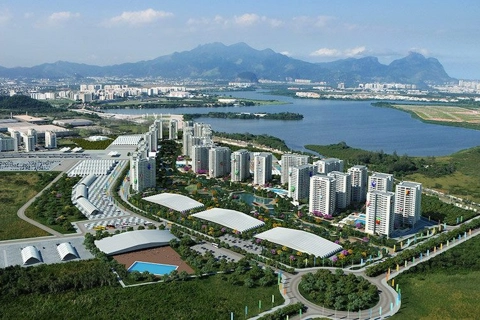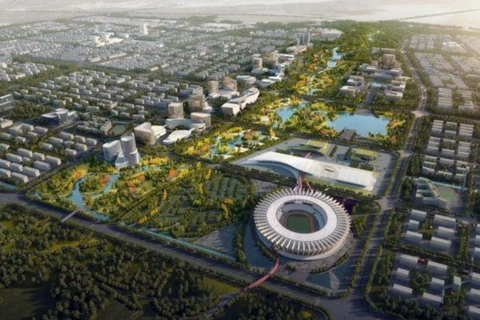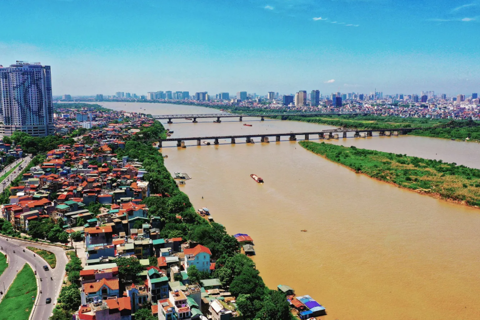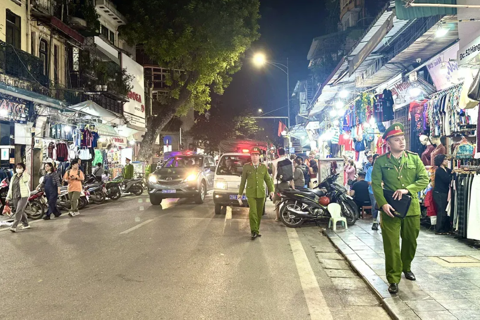Shade trees needed to enhance Hanoi’s urban identity and biodiversity
When selecting street trees for Hanoi, priority should be given to native species that are well-suited to the local soil and climate, economically efficient, and enhance urban aesthetics.
Experts agreed that shade trees planted in Hanoi's urban areas can contribute to creating a unique identity, enhancing biodiversity, and promoting sustainable development.
| Shade trees along the Hoang Quoc Viet Street. Photos: Ha Anh/The Hanoi Times |
Currently, many tree species that are not suitable for Hanoi's natural conditions are still being planted on a large scale without proper testing. Additionally, residents often plant shade trees spontaneously, leading to a chaotic urban landscape. This situation requires the city to research, assess, and identify tree species suitable for urban areas.
Dr. Pham Anh Tuan, Head of the Landscape Architecture Department at Hanoi University of Civil Engineering, said that there are currently 198 tree species from 53 families planted along the inner-city streets. Among these, traditional species like mahogany, milkwood pine, dracontomelon, cassia, crape myrtle, and flamboyant are widely planted.
According to Tuan, the distribution of tree species along each street is quite diverse. Unlike in the past, when only one or two species were planted along a road, there are now an average of 7 to 15 species per street. Some streets even have over 18 different species, including those unsuitable for the environment, such as the Burmese grape, almond, and silk-cotton trees, he noted.
“Trees of various kinds and ages, with varying heights and morphological traits, were planted on numerous streets by both the government and the locals, giving the area a disorganized look. Many unsuitable species, like the red maple and purple jacaranda, have been planted extensively without testing. Some trees, such as the flamboyant planted in narrow median strips, or the small-leaved almond under elevated railways, are not appropriate,” Tuan said.
Nguyen Duc Hung, Director of the Hanoi Technical Infrastructure Management Center under the municipal Department of Construction, explained that in some districts and towns without a green space plan, residents plant fast-growing, wide-canopied trees for shade, often resulting in a mix of species that do not meet urban tree standards or aesthetic requirements.
Preliminary statistics show that in 12 districts, there are over 8,000 ancient trees that are at least 50 years old or have a diameter of 50 cm or more at a height of 1.3 meters. These trees are old, showing signs of poor growth, trunk rot, and root decay, making them vulnerable to storms. Over 3,500 trees, including species not suitable for urban shading like the Burmese grape, Indian coral tree, and strawberry tree, are prone to breaking during storms, with falling fruit creating environmental issues.
| Vo Chi Cong Street in Hanoi. |
Prioritizing native tree species
Tuan proposed a list of 20 native tree species from Ba Vi National Park as potential shade trees for Hanoi's urban areas. This serves as a scientific basis for adding new species to the urban shade tree list, helping to create a unique identity, increase biodiversity, and promote sustainable development.
Luu Duc Hai, Director of the Institute of Urban Research and Infrastructure Development, emphasized that when selecting street trees for Hanoi, it is important to follow certain principles, prioritizing native species that are well-suited to the local soil and climate, while also being economically efficient and enhancing urban aesthetics. In the short term, suitable urban trees should include Bauhinia, Pterocarpus, date palm, oil palm, Barringtonia, Chukrasia, Dipterocarpus, dracontomelon, white Dalbergia, and Hopea, he said.
Professor Pham Van Dien, Rector of the Vietnam Forestry University, argued that there is no one-size-fits-all tree species for Hanoi.
“ Tree selection should depend on the specific location, such as under bridges, on rooftops, or in parks, and even specific streets. To protect urban greenery, even though trees are planted on public land, responsibility should be shared with the residents, especially when trees are planted in front of their homes,” Dien said.
Nguyen The Cong, Deputy Director of Hanoi's Department of Construction, mentioned that the city's People's Committee issued Decision No. 03 on February 28, 2023, outlining regulations for managing urban trees in Hanoi, including a list of trees that are permitted, restricted, and prohibited in urban areas. However, as this list is still under review and revision, it has not been officially issued, causing challenges for the management and control of urban tree planting in the capital.
To replace aging, poorly growing shade trees that can no longer withstand storms, Cong expected the city to develop criteria for classification and replacement plans, with input from experts and scientists.
“Any action taken should be transparent, with public consultation to ensure community consensus,” he added.


